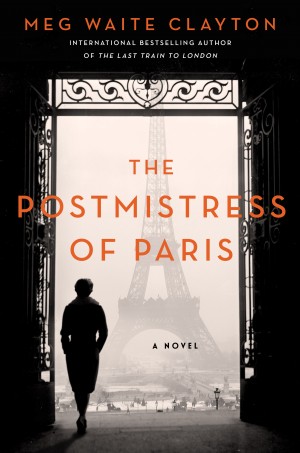At once thrilling and historically edifying, The Postmistress of Paris illuminates the often overlooked stories of non-Jewish people who put their lives on the line during World War II to help refugees escape Europe. The efforts of the Emergency Rescue committee serve as a testament to the power of resistance in the face of barbarism.
Author Meg Waite Clayton fictionalizes the life of heiress Mary Jayne Gold through the character of Nanée, an independent, progressive socialite who cannot look away from the struggles of the Jews in her free-spirited social circle. She knows she can always go home to America, but she also knows her American citizenship is an indispensable asset to getting the artists and intellectuals she loves out of danger.
Nights of drawing exquisite corpses with Andre Breton and other surrealist artists turn into brainstorming sessions with the American Journalist Varian Fry, the real-life figure behind the efforts to smuggle out refugees from Vichy France. Huddled together in the Villa Air-Bel, a safe haven in Marseille arranged by Fry, Nanée and the rest of the rescue committee dare to do what few others in their positions would choose to do.
A character who could so easily come off as fanciful – an heiress who lives in Paris and flies planes with her dog, Dagobert – is, in Clayton’s hands, authentically multidimensional. The consequences of some of Nanée’s decisions greatly traumatize her. She grapples with the grief of losing her father and with the conservative morals instilled in her by the wealthy milieu in which she grew up in Evanston, Illinois. Her dogged determination to fight against the forces of fascism makes her an indelible figure.
The novel is propelled by Nanée’s love affair with the photographer Eduoard Moss; Moss’s own relationship with his daughter, Luki; and Moss’s memories of his deceased wife. Moss is a fictional character, but he resembles many of the persecuted Jewish artists who tried with their work, against all odds, to shed light on the truth of their times. Moss’s ordeal in the internment camp Camp des Milles is achingly rendered. When he contemplates the use of making art in such conditions to his fellow internee, the real artist Max Ernst, Max reminds him, “It staves off hunger, making art does … It’s a balm for anger.”
In telling a spellbinding story, Clayton achieves what great historical fiction writers set out to do: educate the reader about the time period without seeming didactic. It’s a difficult balance to pull off, but The Postmistress of Paris makes it look easy.
Ariella Carmell is a Brooklyn-based writer of plays and prose. She graduated from the University of Chicago, where she studied literature and philosophy. Her work has appeared in Alma, the Sierra Nevada Review, the Brooklyn review, and elsewhere.


